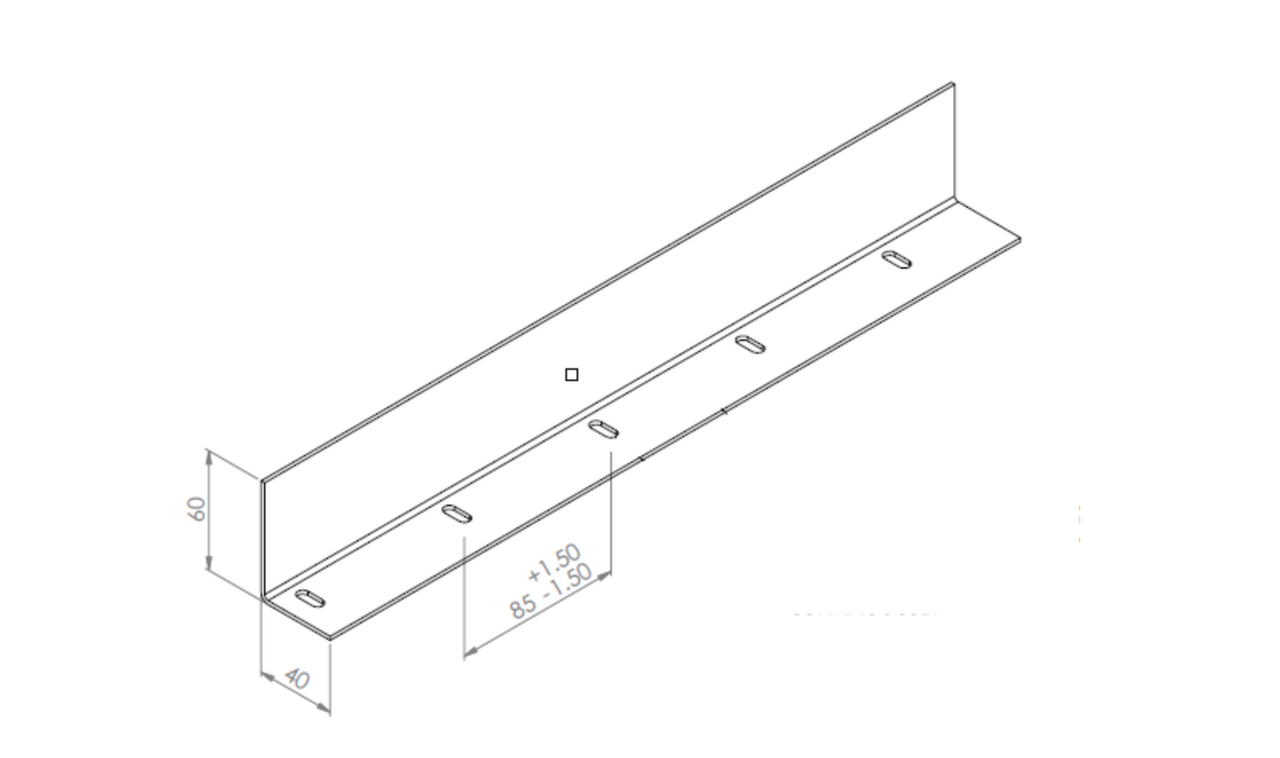An angle bar roll forming machine produces metal angle bars, typically used in construction, fabrication, and other structural applications. These angle bars, also known as L-shaped profiles, are essential for reinforcing structures, serving as supports, or creating frames.
Angle Bar Profile:
- Shape: L-shaped (90-degree angle)
- Leg Lengths: Typically symmetrical (both legs are equal in length), but they can also be asymmetrical.
- Thickness: Varies depending on the material and application, but commonly ranges from 1.5 mm to 6 mm.
- Materials: Steel (galvanized, cold-rolled, or hot-rolled), aluminum, or stainless steel.
- Dimensions: The height and width of the legs typically range from 20 mm to 150 mm, with custom sizes possible depending on the machine's capability.
- Applications: Used in construction for frameworks, supports, reinforcement, and as brackets in various structures.
Angle Bar Roll Forming Machine Overview:
- Profile: Produces L-shaped angle bars with various dimensions based on user requirements.
- Materials: Processes galvanized steel, stainless steel, cold-rolled steel, hot-rolled steel, aluminum, and other metals commonly used in construction and fabrication.
Specifications:
- Material Thickness:
- Capable of handling metal thicknesses ranging from 1.5 mm to 6 mm, depending on the machine’s configuration.
- Forming Speed:
- Standard forming speeds range from 10 to 20 meters per minute. Machines with higher efficiency can reach speeds up to 40 meters per minute or more.
- Leg Length Range:
- Can produce leg lengths between 20 mm to 150 mm or more, with adjustable tooling for creating both symmetrical (equal legs) and asymmetrical (unequal legs) profiles.
- Machine Dimensions and Layout:
- Length: 6–10 meters depending on configuration.
- Width: 1.2–2 meters.
- Height: Approximately 1.5–2 meters.
- Roll Stations:
- The machine typically comes with 12 to 24 roll stations, ensuring gradual bending and precise shaping of the metal into the desired angle profile.
- Power:
- Operates with a 15–30 kW motor depending on the machine size and production speed requirements.
- Control System:
- Advanced machines are equipped with a PLC (Programmable Logic Controller) and HMI (Human-Machine Interface) systems for easy operation, adjustment of profiles, and automatic length cutting.
- Cutting System:
- The machine includes a hydraulic cutting system or flying cut-off mechanism for continuous production without stopping, ensuring clean and precise cuts at the desired length.
- Uncoiler/Decoiler:
- Supports a coil weight capacity of up to 5 tons or more, enabling continuous feeding of the metal sheets into the roll forming process.
Key Features:
- High Precision: Advanced forming stations ensure accurate angles and clean bends, with tight tolerances.
- Customizable Profiles: Allows customization for different leg lengths, angles, and thicknesses to suit various applications.
- Low Maintenance: Designed for long-term operation with minimal downtime due to its robust structure.
- Automatic Operation: Equipped with automatic feeding, cutting, and length measuring systems to reduce manual labor and improve efficiency.
- Durable Rolls: The rolls are made of hardened steel or chrome-coated for longer life and precision over long production runs.
Applications of Angle Bars:
- Structural support in construction (frames, bracing, trusses).
- Reinforcement in building and bridge construction.
- Industrial shelving, racks, and supports.
- Fabrication of metal products such as enclosures, guards, and housings.





